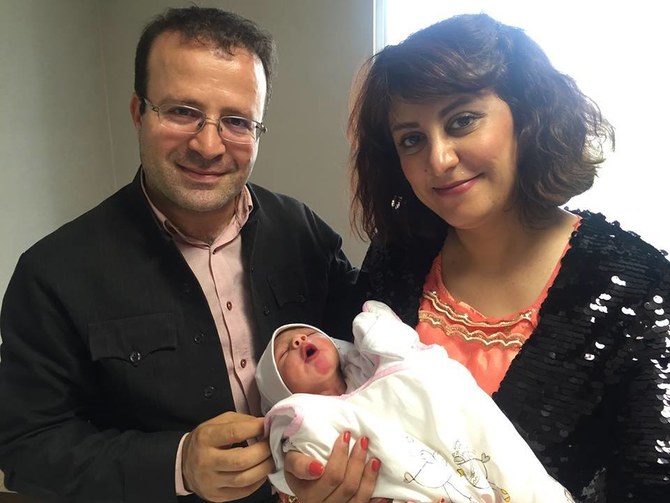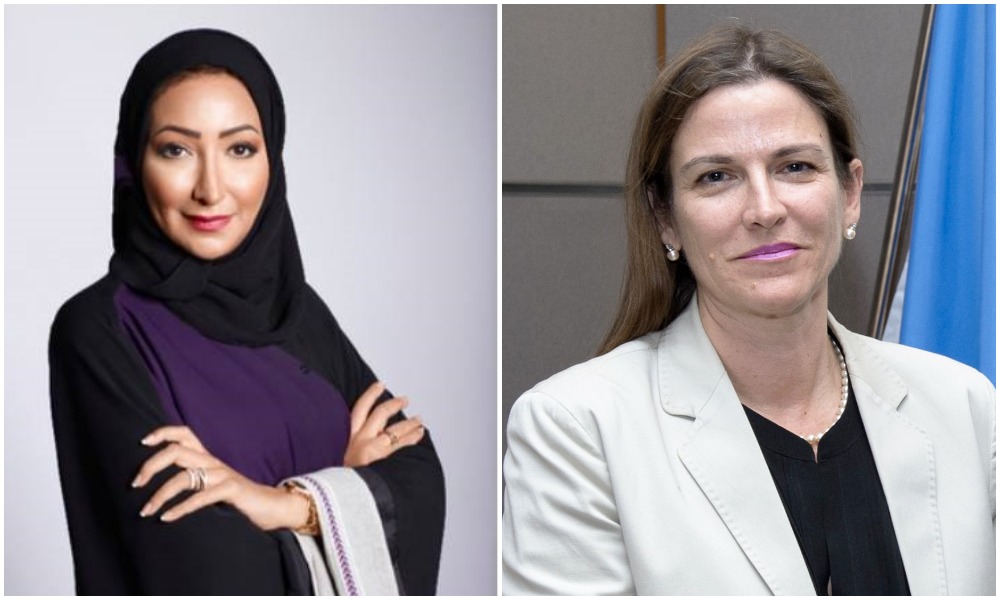Erdogan’s recitation of ‘sensitive poem’ angers Tehran
JEDDAH: The latest row between Turkey and Iran over the controversial poem that was recited by President Recep Tayyip Erdogan during his visit to Azerbaijan continues to escalate.
Iranian lawmaker Ali Asgar Hani threatened the Turkish president by posting a picture of Saddam Hussein hanging on Twitter with the caption: “Mr Erdogan, this was the fate of the last person who coveted Iranian land.” The image was later deleted.
On Saturday, Ankara reprimanded Tehran for “offensive language” aimed at Erdogan about the poem, that refers to Iran’s northwestern provinces as belonging to Azerbaijan. Tehran considers some verses of the poem as promoting separatist ideas among Iran’s Azeri minority.
Ethnic Azeris, who speak Turkish, live in Iran’s three northwestern provinces of West Azerbaijan, East Azerbaijan and Ardabil.
The disagreement added another layer to an already tense relationship between the two countries, whose geopolitical interests clash in several Middle Eastern countries.
Iran is concerned with Azerbaijan’s recent victory in Nagorno-Karabakh over Armenia, as it fears an Azeri awakening within Iran, and views Turkey as a regional competitor.
“They didn’t tell Erdogan that the poem he ill-recited in Baku refers to the forcible separation of areas north of Aras from the Iranian motherland,” Iranian Foreign Minister Mohammad Javad Zarif tweeted.
In the meantime, Iran’s Foreign Ministry said on its website on Friday: “The Turkish ambassador was informed that the era of territorial claims and expansionist empires is over.”
Iranian authorities also summoned the Turkish ambassador to Tehran to protest about Erdogan’s “interventionist and unacceptable remarks.” Turkey retaliated by summoning the Iranian ambassador to Ankara over the “groundless” claims.
Turkish Foreign Minister Mevlut Cavusoglu also called his Iranian counterpart on Saturday to criticize the “heavy statements aimed at Erdogan,” calling them unacceptable.
Erdogan’s communication director, Fahrettin Altun, condemned Tehran’s use of “offensive language” over the “emotional poem, whose meaning has been deliberately distorted.
“It does not include any references to Iran. Nor is that country implied in any way, shape or form,” he added. Some experts believe the spat will soon blow over.
“The recent controversy over a poem recited by Turkey’s president as part of aggressive victory celebrations in Baku appeared to lead to Iranian concerns that Ankara was stoking ‘expansionist’ ideas,” Seth J. Frantzman, executive director of the Middle East Center for Reporting and Analysis, told Arab News.
“However, the controversy was quickly patched up and even Iran’s foreign minister was quickly excusing the Turkish leader’s comments, claiming he simply was not informed about the poem’s origins. It shows that the real desires of Tehran and Ankara are to cultivate a closer working relationship, including between each other and Russia,” he added.
“Clearly, Iran and Turkey’s current leadership value each other and do everything possible not to cause any missteps. This can be seen in the warm embrace that Iran receives whenever there are official visits,” he said.
“Turkey’s ruling party, which tends to use bluster and threats against other countries in the region, such as Egypt, Israel, the UAE and Greece, is quick to not condemn Iran, and to work towards (an) amicable understanding with Tehran,” Frantzman added.
“The overall assessment of the Erdogan government is that Iran is a partner in the region, and that more authoritarian regimes, that jail journalists, can work together against Europe, the West, and moderate states in the southern part of the Middle East.”

Turkey rebukes Iran’s ‘offensive language’ against ErdoganIran summons German, French envoys after Ruhollah Zam execution outrage



